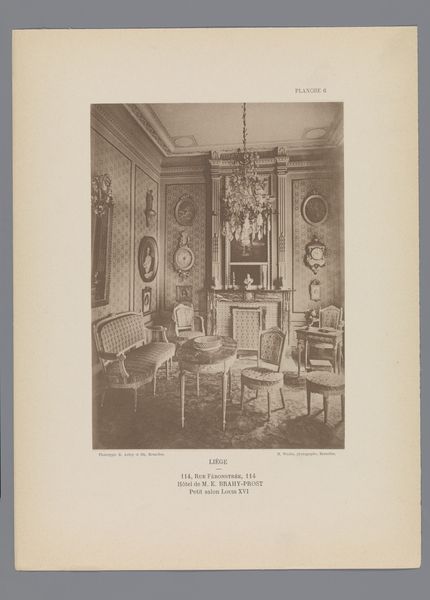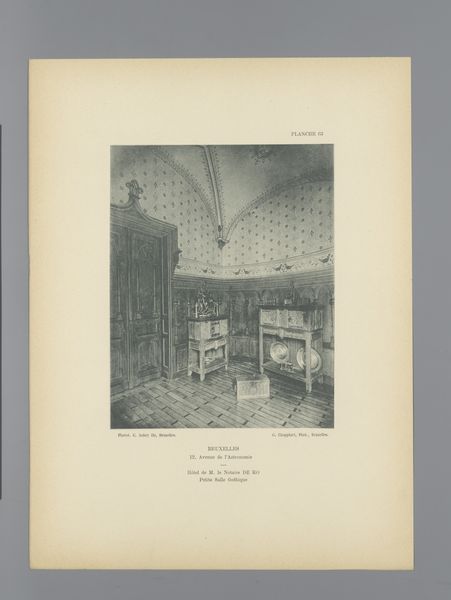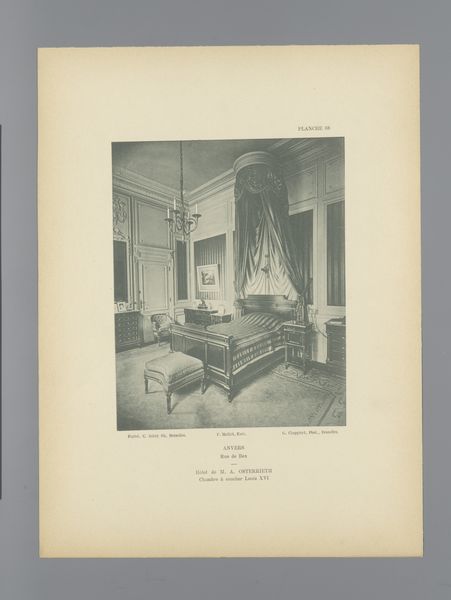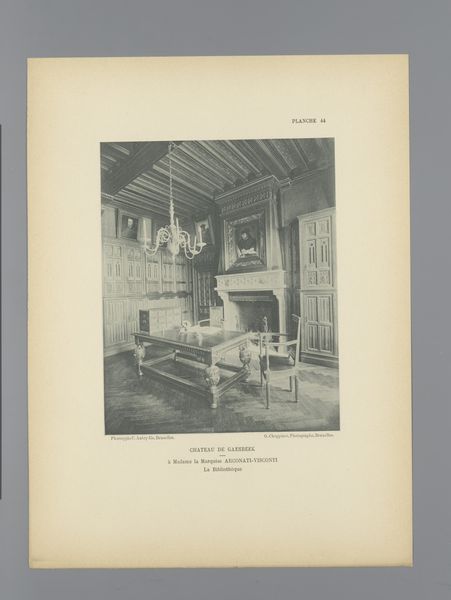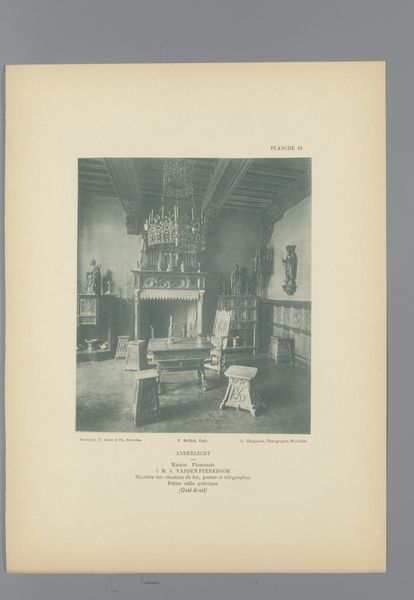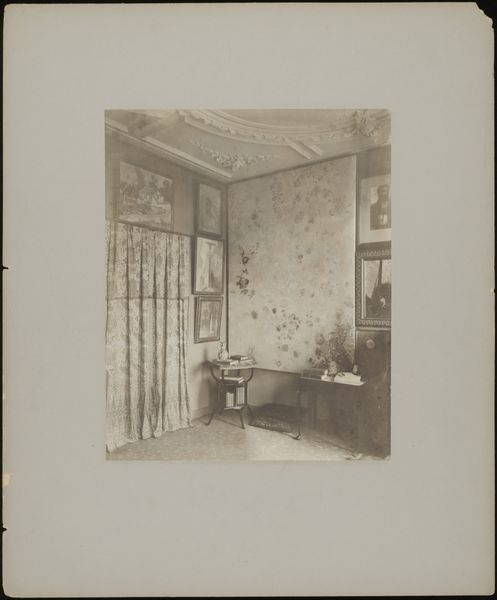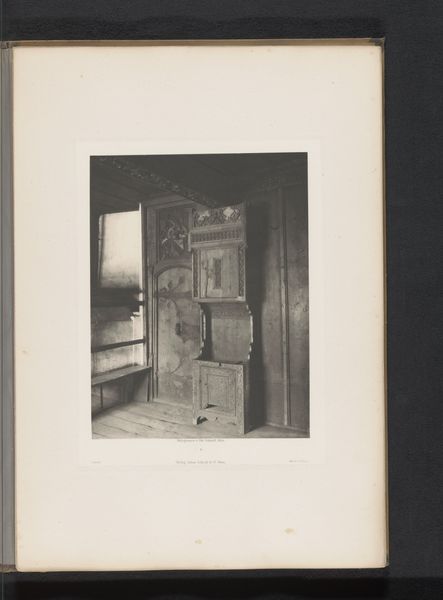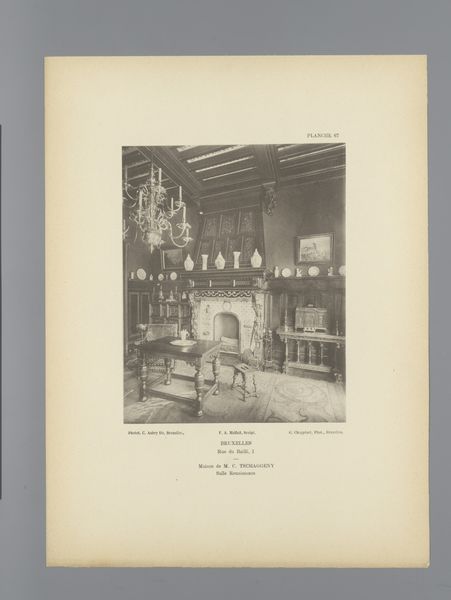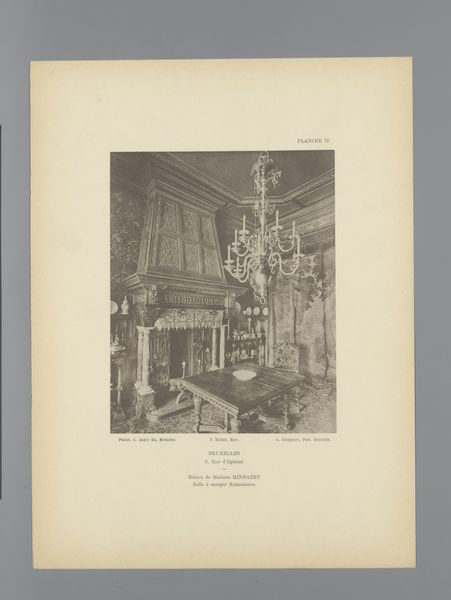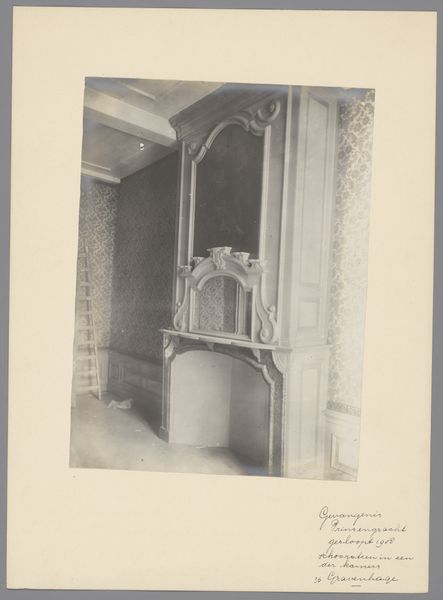
Gezicht op een zitkamer in empirestijl in het huis van Mathys in Brussel, België before 1898
0:00
0:00
print, photography
# print
#
photography
#
genre-painting
#
realism
Dimensions: height 200 mm, width 161 mm
Copyright: Rijks Museum: Open Domain
Curator: Let's discuss "Gezicht op een zitkamer in empirestijl in het huis van Mathys in Brussel, België," a print, predating 1898, by G. Choppinet, depicting an Empire-style drawing room. Editor: My first impression is one of stifled grandeur. The composition feels so contained, almost claustrophobic despite the opulence. The gray scale only intensifies that muted formality. Curator: Indeed. Empire style, as you see here, signified power, drawing on neoclassical elements popularized by Napoleon's reign. Look at the fireplace: the meticulous plasterwork and mantel, obviously produced for a class who benefitted immensely from this imperial regime. Consider, too, the textiles: a means to illustrate international influence, a key facet of the era’s social politics. Editor: It's a striking display of bourgeois interiority, carefully staged, sanitized. But the almost journalistic realism makes me consider Mathys's social position. Whose gaze are we adopting in this scene? I wonder about the politics of documentation; the accessibility of this residence speaks volumes about hierarchies inherent in Brussels’ society then. Who got to occupy this style of living? Who made the chandeliers and kept it polished? Curator: That's where the means of production and labour become integral. The meticulous craft of each element, the likely highly specialized workers hired to manufacture the wallpaper or weave that rug...it suggests a whole hidden workforce involved in constructing this tableau of upper-class life. Editor: The print is haunting, given its detachment. I see now that this image also represents a conscious act of world-building – Empire not merely as style, but a way to make explicit societal ideals concerning ownership, authority and what’s worth preservation. Curator: Precisely! By showcasing the materiality and considering its relationship to production, class, and power, we unearth more of these works' true complexities. Editor: Examining this seemingly simple photograph forces one to reflect upon its role not just as an archive but an assertion of social rank—incredibly powerful stuff to ponder through something that appeared, at first sight, like a stuffy sitting room!
Comments
No comments
Be the first to comment and join the conversation on the ultimate creative platform.


